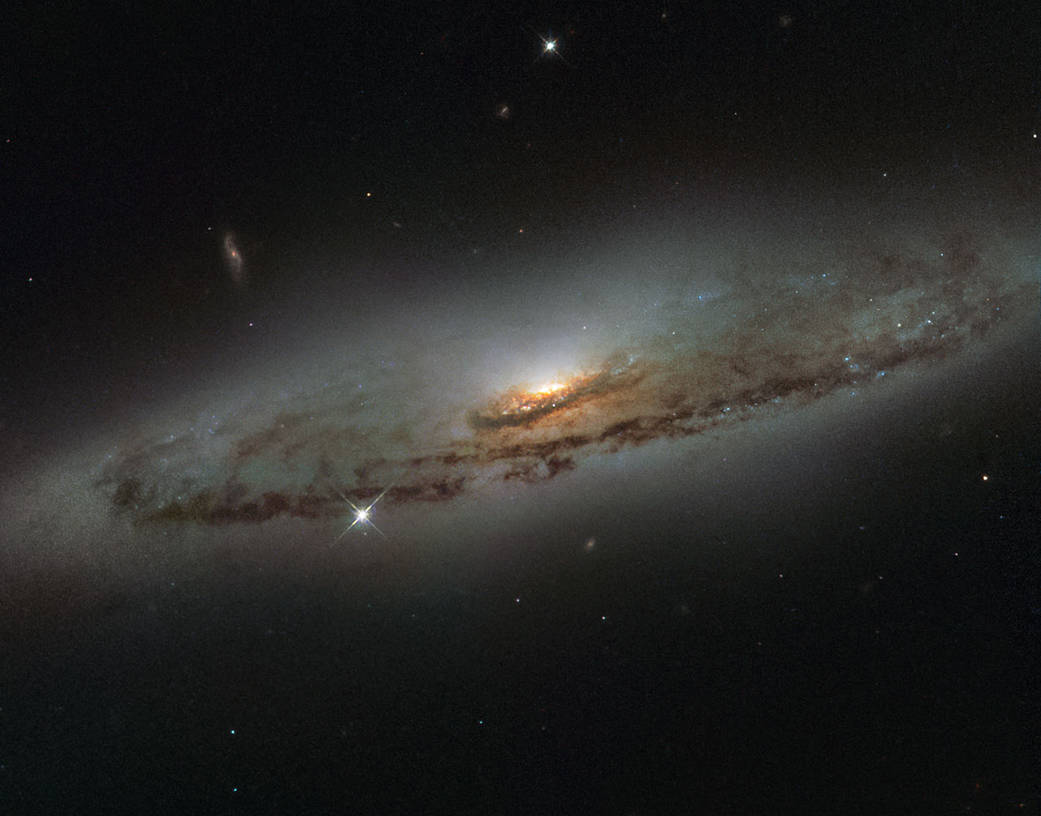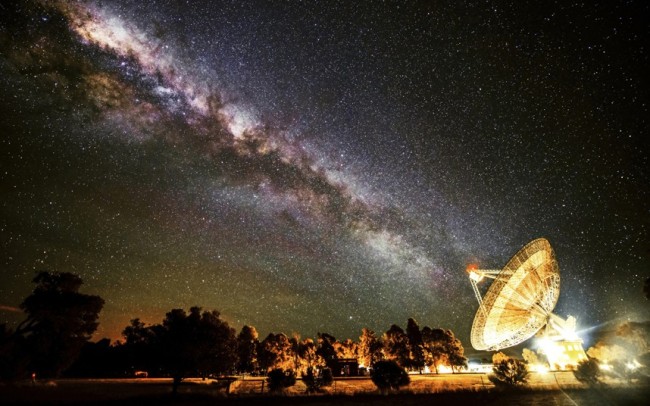 Astrobiologist Caleb Scharf brings us up to date on Fermi’s Paradox — which asks why, given that our galaxy is so old, haven’t other sentient intergalactic travelers found us. The answer may come from a video game.
Astrobiologist Caleb Scharf brings us up to date on Fermi’s Paradox — which asks why, given that our galaxy is so old, haven’t other sentient intergalactic travelers found us. The answer may come from a video game.
[div class=attrib]From Scientific American:[end-div]
Right now, all across the planet, millions of people are engaged in a struggle with enormous implications for the very nature of life itself. Making sophisticated tactical decisions and wrestling with chilling and complex moral puzzles, they are quite literally deciding the fate of our existence.
Or at least they are pretending to.
The video game Mass Effect has now reached its third and final installment; a huge planet-destroying, species-wrecking, epic finale to a story that takes humanity from its tentative steps into interstellar space to a critical role in a galactic, and even intergalactic saga. It’s awfully good, even without all the fantastic visual design or gameplay, at the heart is a rip-roaring plot and countless backstories that tie the experience into one of the most carefully and completely imagined sci-fi universes out there.
As a scientist, and someone who will sheepishly admit to a love of videogames (from countless hours spent as a teenager coding my own rather inferior efforts, to an occasional consumer’s dip into the lushness of what a multi-billion dollar industry can produce), the Mass Effect series is fascinating for a number of reasons. The first of which is the relentless attention to plausible background detail. Take for example the task of finding mineral resources in Mass Effect 2. Flying your ship to different star systems presents you with a bird’s eye view of the planets, each of which has a fleshed out description – be it inhabited, or more often, uninhabitable. These have been torn from the annals of the real exoplanets, gussied up a little, but still recognizable. There are hot Jupiters, and icy Neptune-like worlds. There are gassy planets, rocky planets, and watery planets of great diversity in age, history and elemental composition. It’s a surprisingly good representation of what we now think is really out there.
But the biggest idea, the biggest piece of fiction-meets-genuine-scientific-hypothesis is the overarching story of Mass Effect. It directly addresses one of the great questions of astrobiology – is there intelligent life elsewhere in our galaxy, and if so, why haven’t we intersected with it yet? The first serious thinking about this problem seems to have arisen during a lunchtime chat in the 1940?s where the famous physicist Enrico Fermi (for whom the fundamental particle type ‘fermion’ is named) is supposed to have asked “Where is Everybody?” The essence of the Fermi Paradox is that since our galaxy is very old, perhaps 10 billion years old, unless intelligent life is almost impossibly rare it will have arisen ages before we came along. Such life will have had time to essentially span the Milky Way, even if spreading out at relatively slow sub-light speeds, it – or its artificial surrogates, machines – will have reached every nook and cranny. Thus we should have noticed it, or been noticed by it, unless we are truly the only example of intelligent life.
The Fermi Paradox comes with a ton of caveats and variants. It’s not hard to think of all manner of reasons why intelligent life might be teeming out there, but still not have met us – from self-destructive behavior to the realistic hurdles of interstellar travel. But to my mind Mass Effect has what is perhaps one of the most interesting, if not entertaining, solutions. This will spoil the story; you have been warned.
Without going into all the colorful details, the central premise is that a hugely advanced and ancient race of artificially intelligent machines ‘harvests’ all sentient, space-faring life in the Milky Way every 50,000 years. These machines otherwise lie dormant out in the depths of intergalactic space. They have constructed and positioned an ingenious web of technological devices (including the Mass Effect relays, providing rapid interstellar travel) and habitats within the Galaxy that effectively sieve through the rising civilizations, helping the successful flourish and multiply, ripening them up for eventual culling. The reason for this? Well, the plot is complex and somewhat ambiguous, but one thing that these machines do is use the genetic slurry of millions, billions of individuals from a species to create new versions of themselves.
It’s a grand ol’ piece of sci-fi opera, but it also provides a neat solution to the Fermi Paradox via a number of ideas: a) The most truly advanced interstellar species spends most of its time out of the Galaxy in hibernation. b) Purging all other sentient (space-faring) life every 50,000 years puts a stop to any great spreading across the Galaxy. c) Sentient, space-faring species are inevitably drawn into the technological lures and habitats left for them, and so are less inclined to explore.
These make it very unlikely that until a species is capable of at least proper interplanetary space travel (in the game humans have to reach Mars to become aware of what’s going on at all) it will have to conclude that the Galaxy is a lonely place.
[div class=attrib]Read more after the jump.[end-div]
[div class=attrib]Image: Intragalactic life. Courtesy of J. Schombert, U. Oregon.[end-div]




 Four billion, or so, years from now, our very own Milky Way galaxy is expected to begin a slow but enormous collision with its galactic sibling, the Andromeda galaxy. Cosmologists predict the ensuing galactic smash will take around 100 million years to complete. It’s a shame we’ll not be around to witness the spectacle.
Four billion, or so, years from now, our very own Milky Way galaxy is expected to begin a slow but enormous collision with its galactic sibling, the Andromeda galaxy. Cosmologists predict the ensuing galactic smash will take around 100 million years to complete. It’s a shame we’ll not be around to witness the spectacle. Astrobiologist Caleb Scharf brings us up to date on Fermi’s Paradox — which asks why, given that our galaxy is so old, haven’t other sentient intergalactic travelers found us. The answer may come from a video game.
Astrobiologist Caleb Scharf brings us up to date on Fermi’s Paradox — which asks why, given that our galaxy is so old, haven’t other sentient intergalactic travelers found us. The answer may come from a video game.